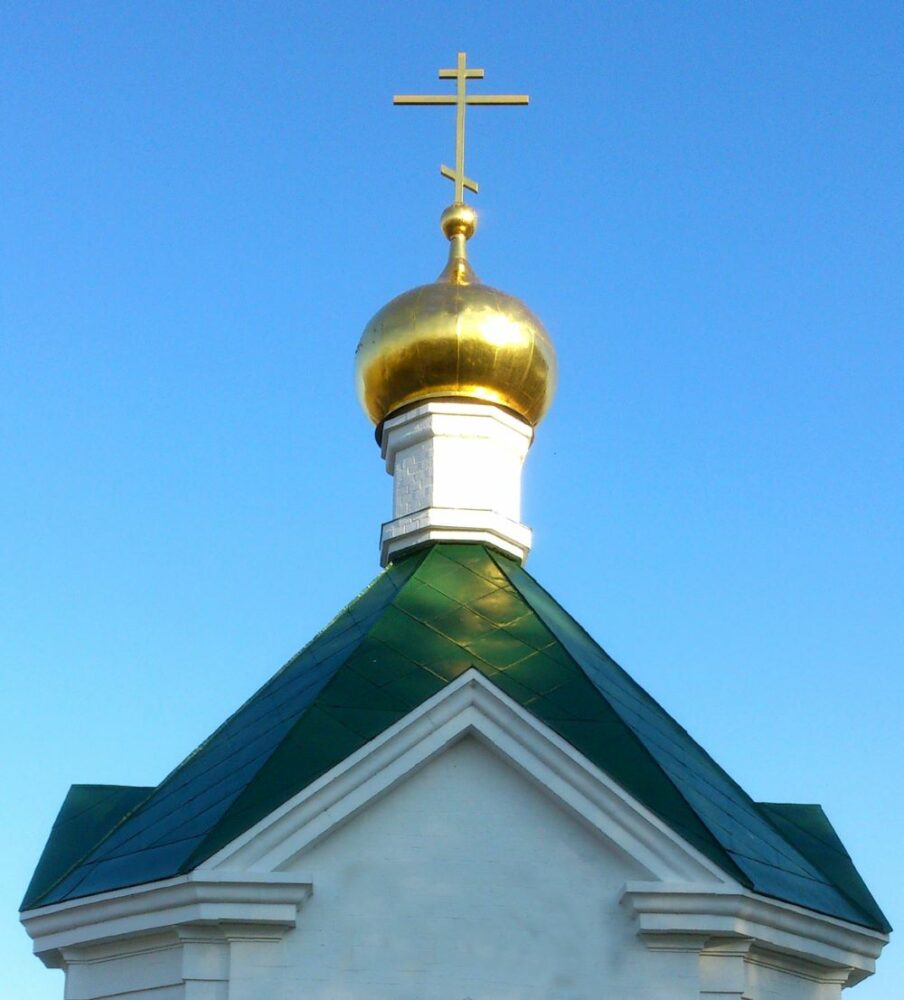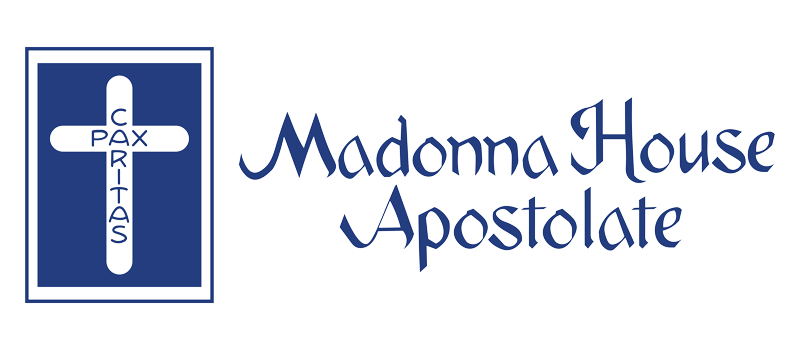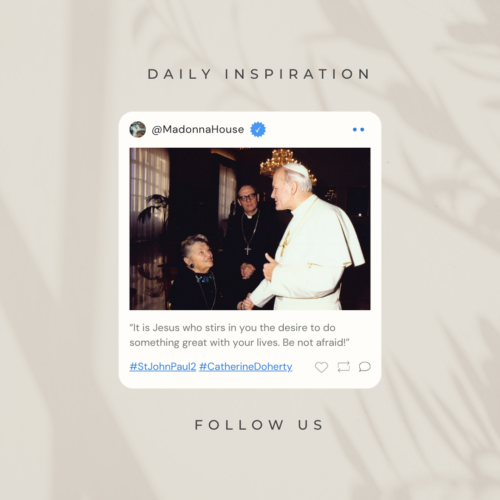
While assigned to our Madonna House mission in Magadan, Russia from 1993 to 2005, Miriam regularly spent time in Moscow with our Orthodox friends, Raia Gershzon and Volodya Erokhin. The following event took place in 1994, just a few years after the collapse of the Soviet Union, when religious freedom was still a new experience.
A particular gift during this time in Moscow was the opportunity for me to celebrate Holy Week and Easter with the Orthodox Church. In Magadan, this was never feasible. Although we had originally hoped to attend Orthodox services from time to time, we discovered that it was physically and psychologically impossible to live two liturgical lives, each governed by a different calendar.
Raia and Volodya wanted to attend the Paschal Vigil in the town of Zvenigorod, about an hour and a half from Moscow by electric train. The ancient parish church, with frescos by Andrei Rublev, was functioning now, and Volodya knew the priest. As there was no return transportation until morning, we would be there all night.
Arriving at the Zvenigorod train station a little before 10 p.m., we made our way leisurely past an eighteenth-century church, now used as an administration centre, and past an old country estate. The twilight was fading as we found ourselves on the edge of a field. In the distance, we saw the church, perched on a hill.
“How long a walk will it be?” Raia wanted to know. “Two hours,” Volodya answered.
“Two hours!” we gasped in unison. A two-hour walk and then three hours standing at the liturgy? But there was nothing to do but to start walking, for the bus had long since departed by another route.
By the grace of God, we made it to the town. It seemed that most of the young people in Zvenigorod, many of them none too sober, were also heading toward the church, and we made our way past them as quickly as possible.
The church was small and solidly packed with people. I was not used to Russian crowds, but Volodya, with a lifetime of experience, gripped Raia and me tightly by the arm and literally rammed a way through the crowd with his body, dragging us after him, to a side door that opened onto a narrow staircase leading to the choir loft. There, on the steps, we had air to breathe and a view of the Royal Doors in the iconostasis.
When the church emptied out for the Procession with the Cross around the outside of the building, we stayed behind, positioning ourselves in such a way that when everyone came back indoors, we would be right in front of the iconostasis*. It wouldn’t be as crowded now, Raia told me, since mainly the believers would be staying after the procession.
As we breathed in and out, enjoying the respite and the Rublev frescos, we heard the first, soft strains of the Paschal chant:
O Christ our Saviour,
The angels in heaven sing a hymn of praise to your Resurrection.
As for us who dwell on earth,
Make us worthy to glorify you with pure hearts.
Louder and louder it swelled, and then, finally, came the long-awaited words:
Christ is risen from the dead, trampling on death by death,
and on those in the tombs, lavishing life!
The church filled up once more. People pressed around us, holding their lighted candles. I was terrified that someone’s hair or clothes would catch fire, and I was more than a little nervous that I might faint. In such an atmosphere, who could even pray?
What happened next was an absolutely new experience. Because I had never experienced anything like it, I find myself, even now, groping to put it into words. It was not emotional nor could it be explained as a crowd phenomenon.
I found myself surrounded, caught up, and carried by the event we were celebrating, by the reality of the Resurrection made present in the liturgy. I was lifted on waves of singing that never ceased for two-and-a-half hours.
Again and again, the Easter verses burst forth, and the smiling priest emerged from the Royal Doors again and again to bless us with the three intertwined candles that represented the Holy Trinity, proclaiming the threefold “Khristos voskrese! Christ is risen!” followed by the resounding response, “Voistinu voskrese! Indeed he is risen!”
Afterwards — even after the two-hour hike and three hours of standing in the church — when it was all over, and the congregation was filing out into the crisp night air, I had only one wish, one burning desire: that the liturgy would start all over again and never, never finish!
Acquaintances of Raia and Volodya invited us to a collation in the small parish house next door. We contributed our provisions, including our homemade paska and koolitch. Others had also brought these traditional Easter desserts, and there were other foods as well, and wine, and of course, tea. Again and again we sang and proclaimed, “Christ is risen! Truly he is risen!”
It was almost six in the morning as we made our way in the early dawn to the bus that brought us to the train station for our return to Moscow. By nine we were home for our own breakfast of koolitch and paska, eggs and fruit, coffee and liqueur. We could hardly keep our heads up from fatigue, but none of us wanted to go to bed.
All through Radiant Week, as the Easter octave is called in Russian, we would continue to bask in the light of the Resurrection.
*In Eastern Christianity, an iconostasis is a wall of icons and religious paintings in a church, separating the nave from the sanctuary.
Adapted from God Calls Me Miriam (2009), Madonna House Publications, pp. 130-133.




